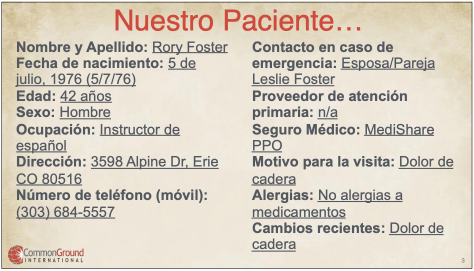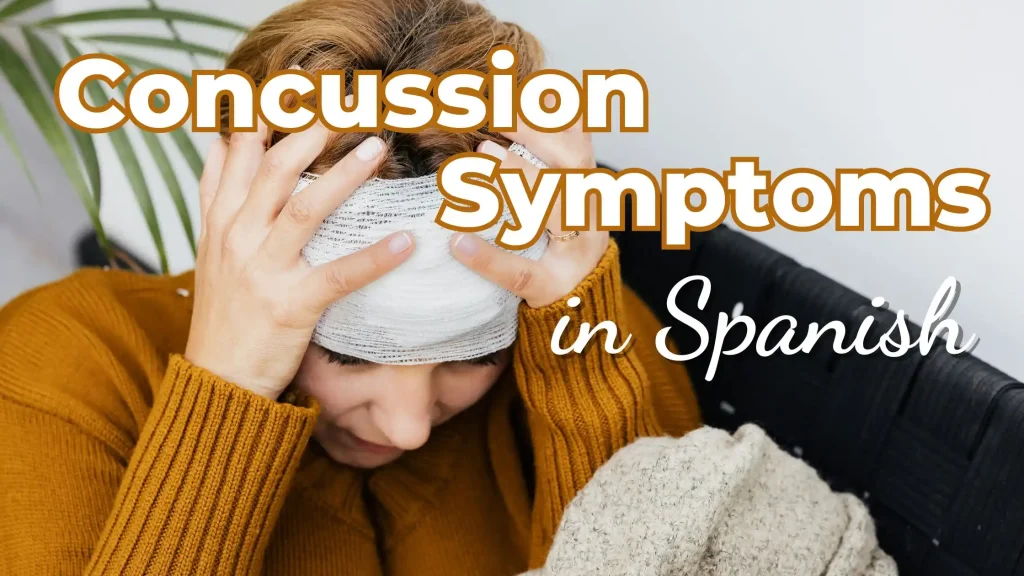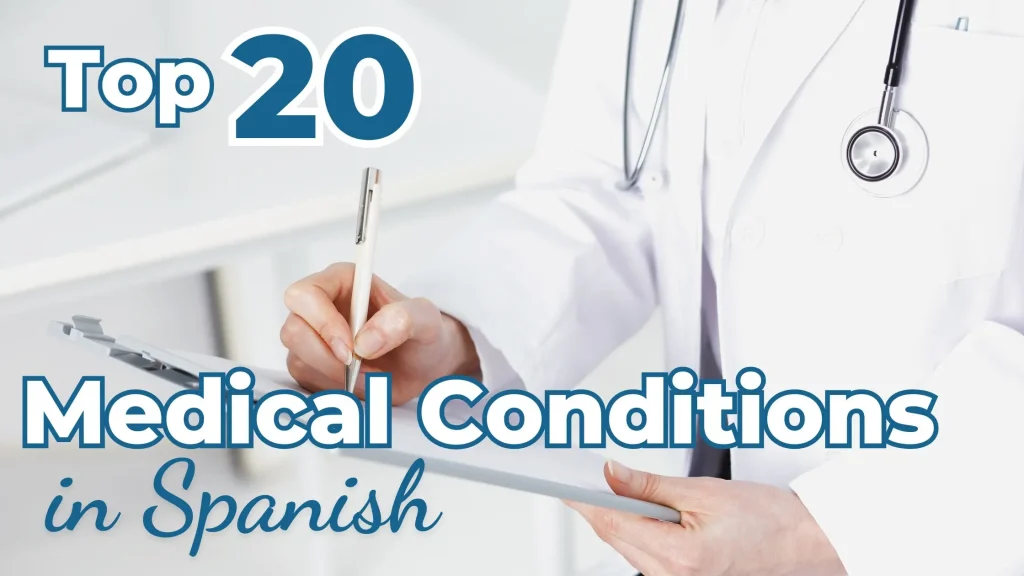This Medical Spanish lesson focuses on learning how to ask Patient Intake Questions and talk through patient intake information in Spanish: Preguntas para Ingresar al Paciente.
In this lesson you’ll notice that talking through basic patient demographic information on your intake forms requires a good command of numbers and requires special focus to comprehend numbers when given to you in Spanish. We’ll focus on numbers more in our next lesson.
In this medical Spanish lesson you will learn:
- Vocabulary for basic demographic information in Spanish
- Useful questions to ask to your patient during the medical review of symptoms
- Some questions using the “Have you ever…?” phrase in Spanish
Here is the Medical Spanish lesson about Patient Intake Questions in Spanish I taught to the Facebook group:
Subscribe to our YouTube Channel to see all of our lessons and get the latest videos right away!
Información demográfica básica… / Basic Demographic Information …
This section is related to the kind of things you tend to ask to your patient when you have to fill out a patient check-in form and/or an intake form:
| Spanish | English |
| Nombre y Apellido: | Name and Last Name |
| Fecha de nacimiento: | Date of Birth |
| Edad: | Age |
| Sexo: | Sex |
| Ocupación: | Work |
| Dirección: | Address |
| Número de teléfono (móvil): | Phone Number (mobile) |
| Contacto en caso de emergencia: | Emergency Contact |
| Proveedor de atención primaria: | Primary Care Provider |
| Seguro Médico: | Medical Insurance |
| Motivo para la visita: | Reason for Your Visit: |
| Alergias: | Allergies |
| Cambios recientes: | Recent Changes |
Un paciente de ejemplo / A Patient as a Example

When talking to Spanish speakers you will notice that dates and numbers are used differently than how we use them in English.
- Dates in Spanish follow the European order with the day, month and then the year. You separate each part with a “de”: Cinco de julio de 1976.
- Numbers in Spanish are a little different as well. In English, you’re likely used to giving people phone #s and other info digit by digit. However, in Spanish there is a tendency to use the natural number or some convenient grouping of two. For example, my phone number in Spanish would be: (303) trescientos tres – (6) seis – (84) ochenta y cuatro – (55) cincuenta y cinco – (57) cincuenta y siete.
Of course you’re free to communicate numbers in any way you prefer and people will understand them. The difficult part is comprehending numbers when you’re trying to collect them from a Spanish speaker.
Preguntas útiles para ingresar al paciente… / Useful Questions for checking in your patient…
¿Cómo se llama? / What is your name?
¿Cuál es su… / What is your…
- …apellido? / Last name?
- …fecha de nacimiento? / Birth date?
- …dirección? / Address?
- …número de teléfono? / phone number?
Otras Preguntas… / Other Questions
After gathering the first batch of basic demographic information from your patient, then you can start asking him/her other information you might find useful:
| Spanish | English |
| ¿En qué trabaja? ¿Dónde trabaja? | What do you do for work? Where do you work? |
| ¿A quién contactamos en caso de emergencia? | Who do we contact in case of emergency? |
| ¿Quién es su proveedor de atención primaria? | Who is your primary care provider? |
| ¿Tiene seguro médico? | Do you have insurance? |
| ¿Cuál compañía? ¿Y su número de póliza? | Which company? And your policy number? |
| ¿Tiene alergias a algún medicamento? | Do you have allergies to any medications? |
| ¿Qué le trae a la clínica hoy? | What brings you to the clinic today? |
| ¿Cómo le podemos ayudar hoy? | How can we help you today? |
| ¿Qué le molesta hoy? | Is anything bothering you today? |
For a review of symptoms in Spanish, try using the present perfect form of the verb “notar” which means “to notice”. “Tener” (to have) is also a good verb to use for a review of symptoms. Here is how the question would be worded: ¿Recientemente ha notado (ha tenido)…? / Recently Have You Noticed (Had)…?
| Spanish | English |
| …algún cambio en peso? | …any changes in your weight? |
| …tobillos/pies hinchados? | ….swollen ankles / feet? |
| …convulsiones? | …seizures? |
| …ojos secos? | …dry eyes? |
| …erupción en la piel? | …any rashes on your skin? |
| …dolor en el cuello? | …neck pain? |
| …tos crónica? | …chronic cough? |
| …diarrea crónica? | …chronic diarrhea? |
| …dolor de pecho? | …chest pain? |
| …piel amarillenta? | …yellowish skin? |
| …dolor de espalda? | …back pain? |
| …depresión / ansiedad? | …depression / anxiety? |
| …pulso rápido …palpitaciones? | …Fast heart rate … … palpitations? |
| …dolor en las articulaciones? | …joint pain? |
| …dolor en los músculos? | …muscle pain? |
| …sangrados frecuentes? | …frequent bleeding? |
| …moretones frecuentes? | …frequent bruises? |
Now it’s your turn! I packaged all of this vocabulary in Spanish into some flashcards for you to study.
I packaged all of this into easily downloadable .pdf notes– Get your copy for free today!
Keep up the good work speaking responsible Spanish to your patients!
*If the link isn’t working for you, you may need to unblock pop-ups in your browser settings





